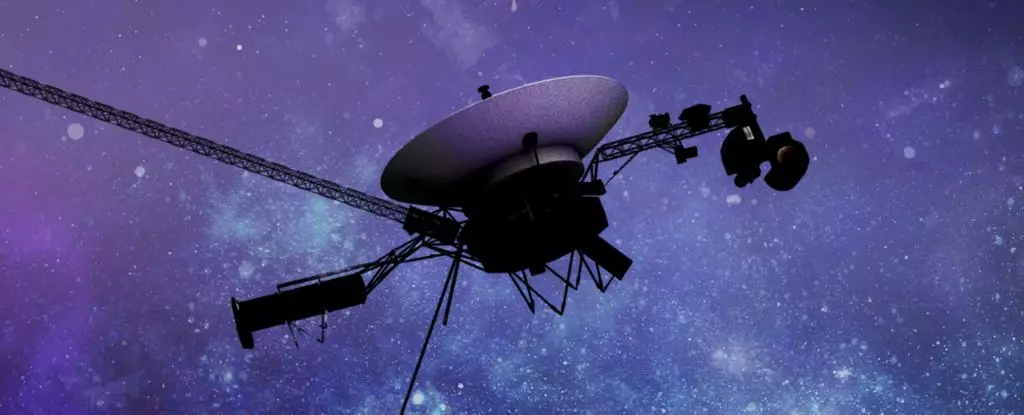A reassuring signal has finally reached us from the depths of interstellar space, as Voyager 1, the most distant human-made object from Earth, has overcome a major setback and is once again transmitting valuable data. After months of transmitting garbled messages, the spacecraft has resumed normal scientific operations, much to the delight of NASA scientists.
In November 2023, Voyager 1 encountered a significant issue that caused it to send back nonsensical readings, baffling researchers. The problem was eventually traced back to a malfunctioning chip in the probe’s memory system, a component that dates back to the 1970s. Engineers at NASA had to consult outdated manuals to troubleshoot the problem, reminiscent of resetting electronics after a power outage. Through diligent efforts, the team managed to restore functionality to all four science instruments onboard the spacecraft.
Voyager 1, along with its companion Voyager 2, is on a mission to explore a region of space that has never been directly observed by a man-made object. These probes provide invaluable data on the interstellar medium, shedding light on the boundaries of our Solar System and the extent of the Sun’s influence. While often believed to have left our Solar System, the Voyager probes are yet to reach the Oort cloud, the distant fringe of our cosmic neighborhood.
Despite their remarkable longevity, the Voyager probes face inevitable limitations due to declining power supply. Voyager 1 is projected to take centuries to reach the Oort cloud, with the certainty of at least one instrument still functioning by 2025. The mission’s duration hinges on the remaining power reserves of the spacecraft, which have shown signs of depletion in recent years. Maintenance efforts are underway to sustain Voyager 1’s critical systems and preserve vital scientific data.
As we celebrate the successful restoration of Voyager 1’s operations, we are reminded of the enduring spirit of exploration and discovery that drives human endeavors in space. These pioneering spacecraft have rewritten our understanding of the cosmos and continue to inspire new generations of scientists and engineers. Despite the challenges of aging equipment and vast distances, Voyager 1 remains a beacon of human ingenuity and curiosity in the endless expanse of the universe.
The recent revival of Voyager 1’s scientific mission marks a significant achievement in space exploration, showcasing the dedication and expertise of NASA scientists and engineers. As we look to the stars and beyond, the legacy of the Voyager probes will endure as a testament to humanity’s relentless quest for knowledge and understanding of the cosmos.


Leave a Reply